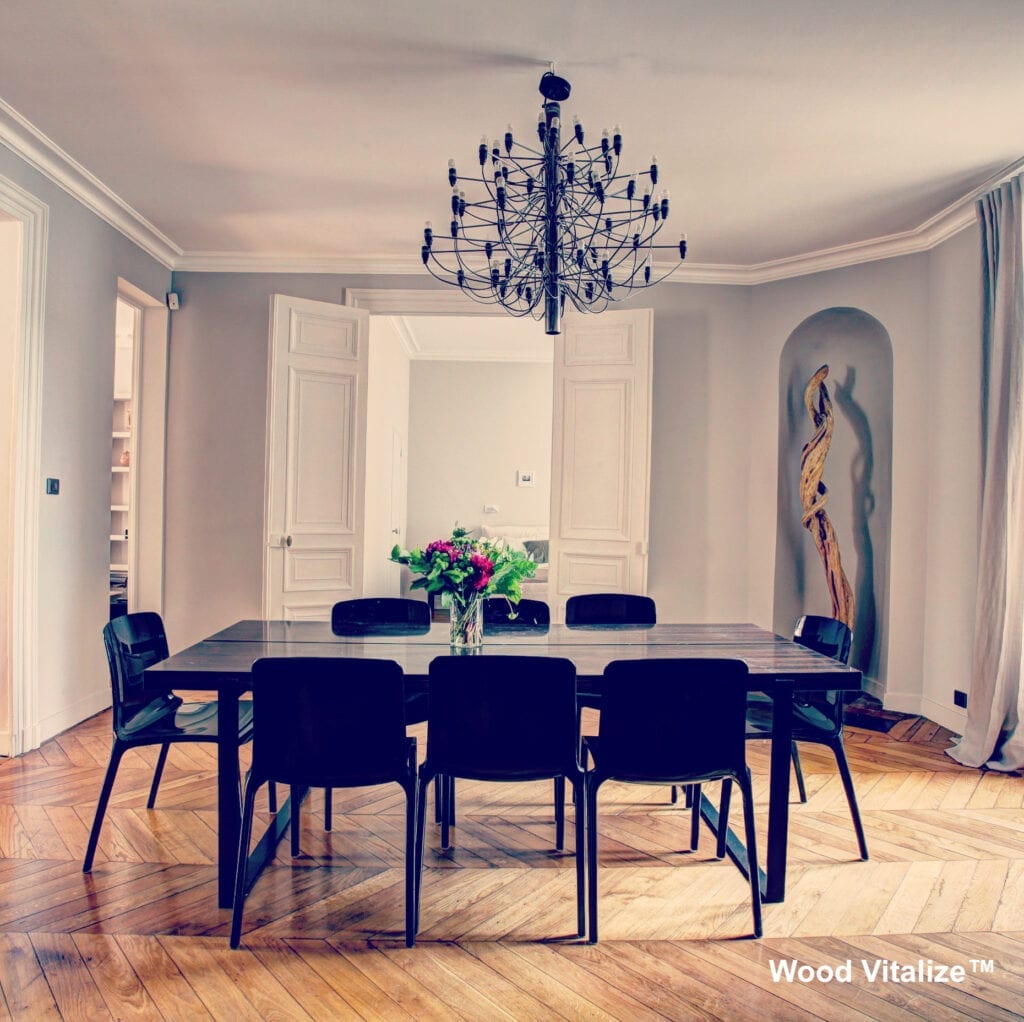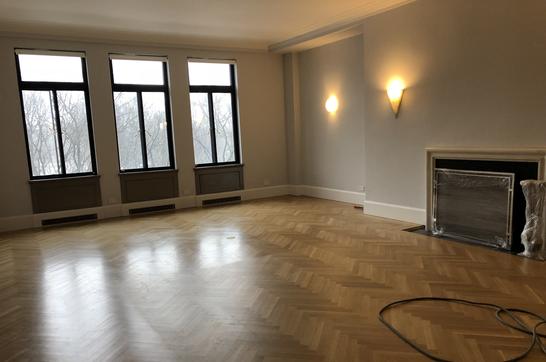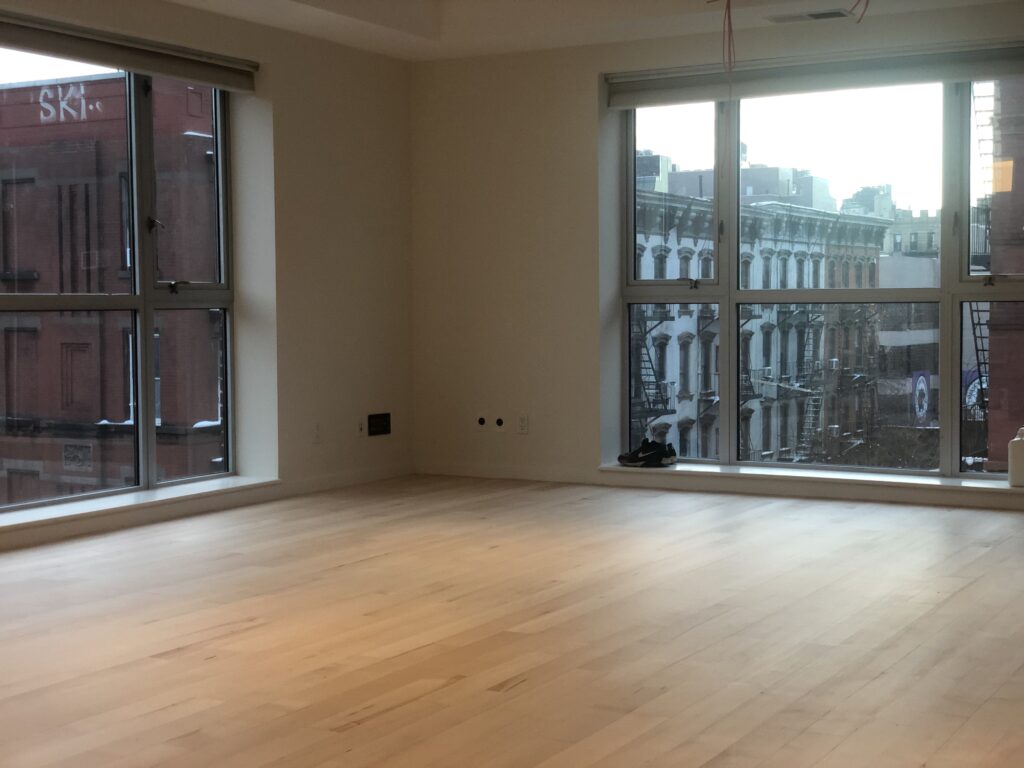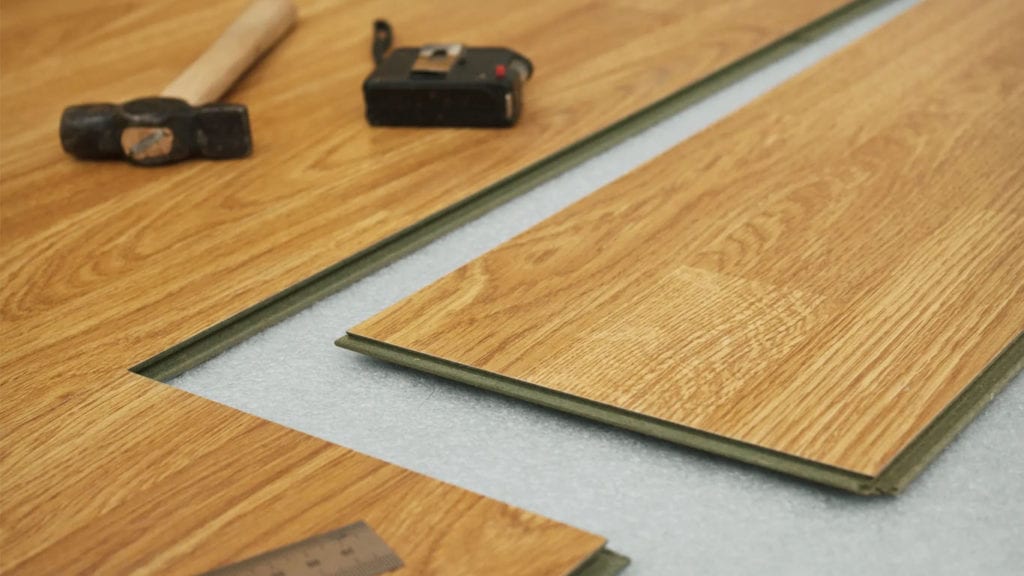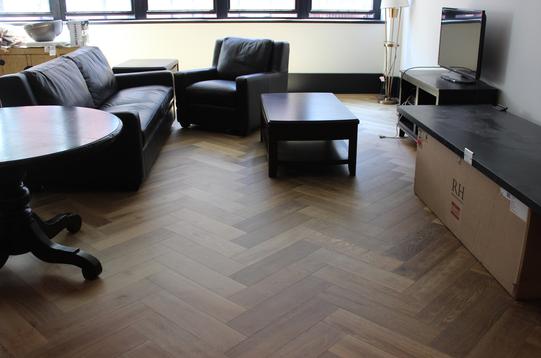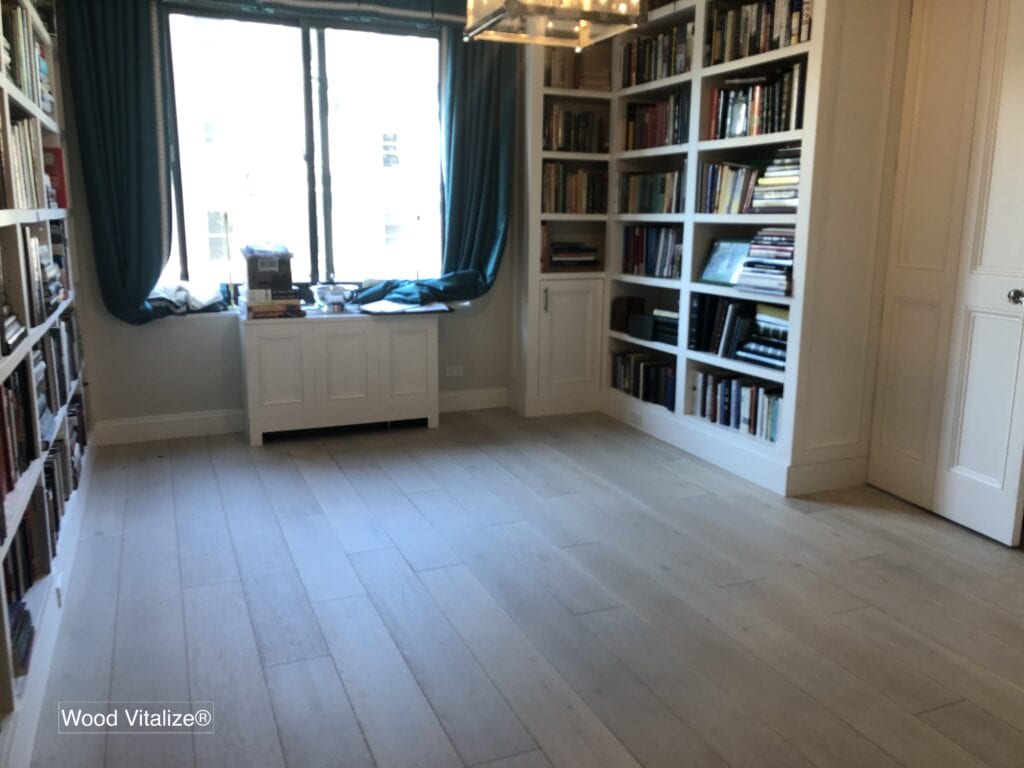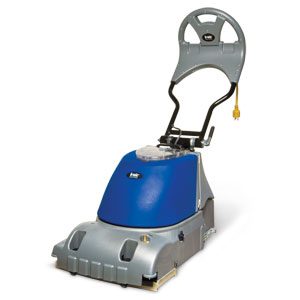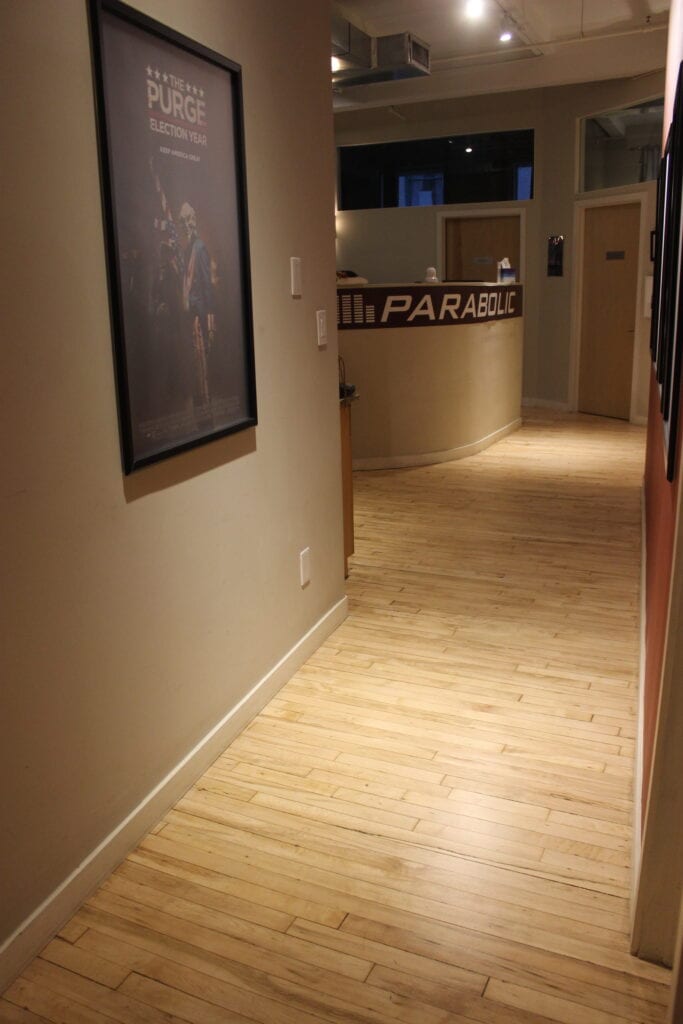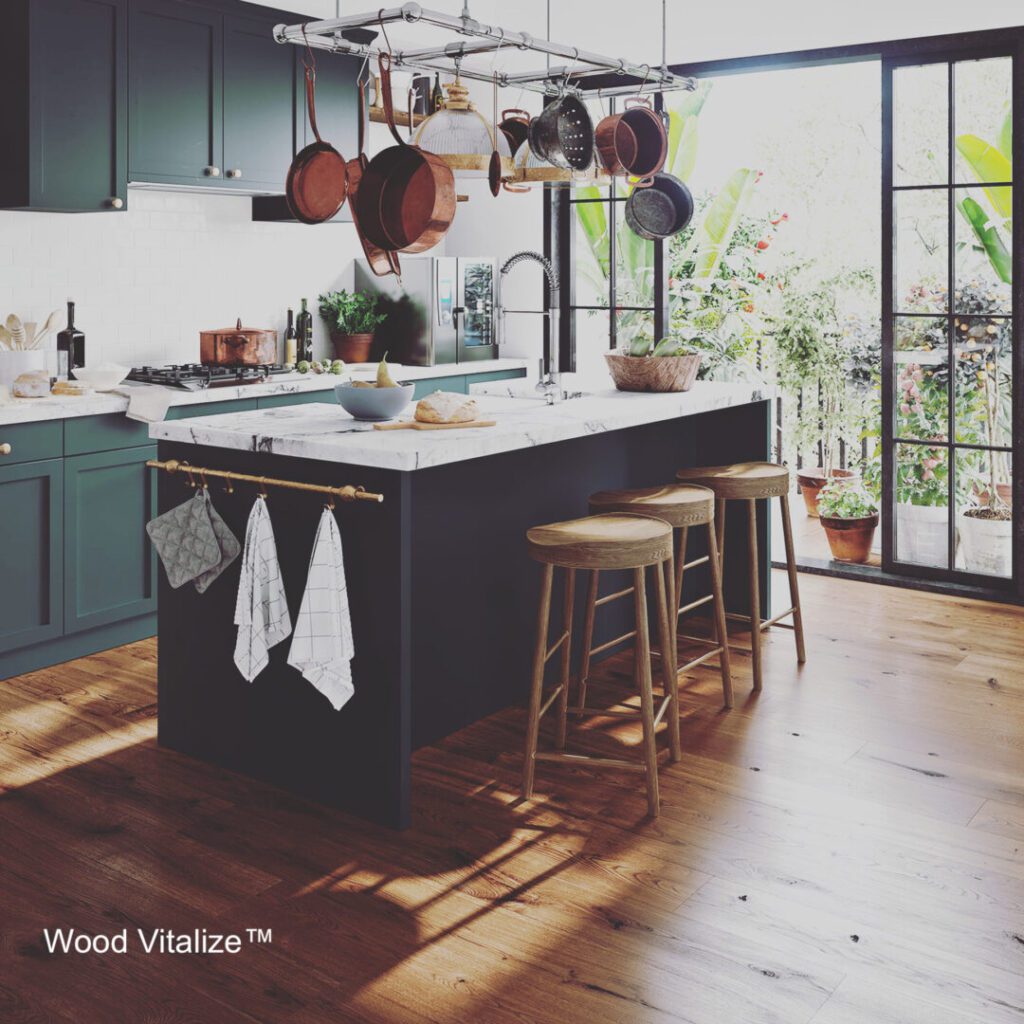Dustless Wood Floor Refinishing and Wood Floor Cleaning.
We pride ourselves in wood floor refinishing and wood floor cleaning. Our hardwood floor refinishing process includes sanding, refinishing, cleaning, and restoration without the dust or toxins. Our dustess machines collect the debris and toxins during the process. This is a "dustless" wood floor refinishing (sanding) process. We also provide an eco friendly process where there are no VOCs. This really helps when people are hypoallergenic and really want a green safe process. We have child safe green guard products and are certified in ECO friendly construction.
We also provide wood floor cleaning services. We deep clean the floors and strip wood floors of old waxes, polishes, and cleaning solutions. In certain cases sanding is not necessary (the wood boards are just really dirty). A deep cleaning of the wood grains can make a huge difference and brighten up the floors. Sometimes the hardwood floor is too thin, or the job site has space and furniture limitations (please inquire with any questions). We can clean the wood floors without moving the furniture out and have you back on the floors the same day. Buffing, screening, and recoating are all part of the services that we provide.
Commercial wood floor refinishing and cleaning is also our speciality. We come in when the store or office is closed and clean the hardwood floors or sand and refinish the floors. We offer daily to yearly plans for your hardwood floors.
What is inolved in sanding, refinishing, and installing wood floors?
Up until 1926, hardwood floor refinishing was a labor intensive and time consuming process. This is because instead of sanding the floors, worker's would get down on their hands and knees and pull scraper blades across the floor until the wood was uniformly exposed. The floor was refinished with two coats of orange varnish and then waxed. When marred or worn, the shellac was scrubbed off and wax was reapplied.
The history of hardwood floor refinishing would be forever changed with the electric belt sander (used for the majority of the room) and edger (a smaller machine used to get as close to the edges as possible). The process of hardwood floor sanding was streamlined in the 1920's.
The hardwood floor refinisher used a series of sand paper on the drum sanding machines to remove the polyurethane and any surface imperfections from the wood. It was recommended that the wood floors be sanded in three passes. 1st pass is with a very rough grit of sandpaper. 2nd pass is with a medium grit. 3rd pass is with a very smooth grit to achieve the best results. Any areas that the machines are unable to reach are then be scraped out by hand.
Once the wood floor is sanded and bare, a sealer is applied to close the grains. The sealer provides for a smooth and even application of polyurethane. Once the sealer has dried, the hardwood floor is sanded using a buffer and an extremely smooth sanding screen. This assures that there will not be a rough finish when the polyurethane is applied.
Lastly, layers of polyurethane are applied to the hardwood floors and allowed to dry. Many contractors still use an oil-based polyurethane, but this is not recommended and no longer necessary due to the advancements in water-based polyurethanes. Oil-based refinishing products are particularly toxic with high VOC (volatile organic compound) ratings. Although sanding is still a viable process, great care should be taken to minimize the inherent health issues that arise. For further information see What Is Dustless And Sandless Wood Floor Refinishing?
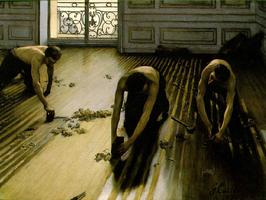
The history of wood floor refinishing and installation spans centuries. 19th Century Hand-Cut Hardwood Flooring as we know them today were not commonplace until the late 1800’s.
For centuries, hardwood floor sanding and installation were restricted to only the wealthiest of people. Expert craftsmen would work on a single wood floor for years. For installation, they intricately cut and laid down patterns by hand. This is because wood floors were considered works of art. Hence, the wood floor's typically were parquet floors (patterned hardwood). Having a parquet floor refinishing was a definite indicator of one’s upper class status.
The only other floor refinishing to be found up until the late 19th century were usually rough unfinished wood planks in the homes of commoners. Furthermore, they relied on foot traffic over time to smooth them down.
The hand-sawn planks used to produce the common hardwood floor were butted against each other during installation. However, due to the natural contraction of wood due to cold weather, gaps would open between the planks which allowed cold air to pass into the living areas from the basement. Also, small objects had the tendency to fall into these gaps and be lost in the depths below.
A major advancement in hardwood floor installation came from a very simple improvement developed in 1885. The invention was the side-matcher. This wood floor machine created wood planks with a groove on one long side and a tongue on the other. This allowed the boards to interlock and could allow hollow-backing on the boards. Which also allowed them to conform better to subfloors.
The hollow-backing made the wood flooring thinner, which allowed more wood to be procured at the mill. Hence, the reduction of hefty freight charges. All of these advancements, along with the improvement in mill technology during the industrial era, led to a reduction in pricing for hardwood floors. Soon hardwood flooring became widespread to the point that we know it today.
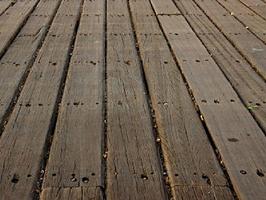
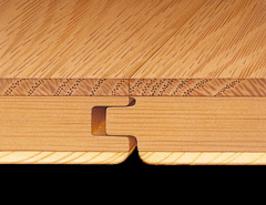
Although sanding has come a long way throughout the history of hardwood floor refinishing there are still some chemical dangers. A lot of flooring contractors still use high VOC polyurethane and stain products. Two aspects of sanding hardwood floors that present problems are the creation of dust and the use of chemicals high in toxins.

Sanding can be a dustless hardwood floor refinishing process. When an area is to be sanded, usually all the furniture and wall-hangings need to be removed before the process begins. Plastic sheeting should be sealed over all doorways to prevent dust reaching other areas of the home. This is due to the fact that dust presents a variety of health risks. Breathing the particles may cause allergic respiratory symptoms, mucosal and non-allergic respiratory symptoms, and cancer. With dustless refinishing, only the furniture needs to be removed.
Finally, a mass clean up with respirators is required with a traditional hardwood wood floor refinishing. A mass clean up is not needed with the dustless wood floor refinishing process. The highest quality machines today also minimize the dust emitted into the air to avoid these hazards during the hardwood floor sanding process.
Proper ventilation is of the utmost importance in when an oil-based polyurethane is used. Oil-based sealers and polyurethanes have high VOC levels (445 G/L as opposed to water-based polyurethane which is usually around 200G/L) that can cause permanent brain and nervous system damage with exposure over time, as well as dizziness or headaches in the short run.
![]() Wood Vitalize Dustless Hardwood Floor Refinishing process is the culmination of centuries of advancements in the hardwood floor industry. After all, we have come a long way in the history of hardwood floor refinishing from scraping floors on our hands and knees - so why should the advancements stop there? Hardwood floor sanding is a necessary process at times, but the dust and chemicals associated with it are not ideal.
Wood Vitalize Dustless Hardwood Floor Refinishing process is the culmination of centuries of advancements in the hardwood floor industry. After all, we have come a long way in the history of hardwood floor refinishing from scraping floors on our hands and knees - so why should the advancements stop there? Hardwood floor sanding is a necessary process at times, but the dust and chemicals associated with it are not ideal.
In the 21st century it is no longer necessary for your home to be infiltrated by dust that is not only tedious to clean up, but can also cause respiratory dysfunction and even cancer. Additionally, there have been improvements in the chemical makeup of finishes that drastically reduce the risks for the brain and nervous system. Hence, the damages that are associated with traditional oil-based polyurethanes are not needed.
The Wood Vitalize dustless hardwood floor refinishing process is an eco-friendly, non-toxic method that does not require you to leave your home for days on end to avoid the harmful dust and fumes of the traditional hardwood floor sanding process.
Wood Vitalize Eco-Friendly Hardwood Floor Refinishing Process begins with the use of specialized dustless floor machines. Our machines prepare the floors while using eco-friendly methods to remove grime, grit, and soils embedded in the wood. It is the presence of these foreign elements that damage hardwood floors over time and cause them to appear dull and lusterless.
We are able to sand down the floors without the dust to remove all damages and stains. Our wood floor refinishing methods treat the floors to bring back the color, beauty, and liveliness they once had. Finally, the floor is refinished with a water-based, professional grade polyurethane. This is because our polyurethane has drastically lower VOC ratings than traditional polyurethanes. The drying time for our polyurethanes are another benefit of the process. Our polyurethanes dry in under two hours rather than oil-based polyurethanes 24 hr dry time.
You will notice that dust has not been mentioned in the description of our process. That is because this is a completely dustless hardwood floor refinishing process! The Wood Vitalize techniques ensures that all of our work remains where it belongs – on the floor!
Dirt and grime is captured and completely removed by HEPA vacuums throughout the process. This eliminates not only the inherent health and ecological risks of dealing with dust, but also the nuisance of dust in the work area altogether! This means that you can leave your pictures on the walls of your home while the dustless hardwood floor refinishing process is done.
If you are working with limited space in your home, furniture can be left in the room while our specialists work. In these cases a “half and half” method is employed. Any furniture can be moved to one side of the room while the floor is refinished.
Once that half is complete and allowed to dry, the furniture is moved onto the refinished area and the rest of the room can be completed! Hence, this is a wonderful when sanding a hardwood floor.
The Wood Vitalize Eco-Friendly wood floor refinishing process reduces health risks, is friendlier for the environment, non-toxic, and all of the work can typically be finished within one work day. That’s right – one day! With our process you can be walking on your newly refinished wood floor by dinner time as opposed to the typical 3-5 day work period you would encounter with traditional refinishing processes.
There are many different hardwood floor types on the market. Hardwood flooring varies in color, texture and hardness. Although color and texture are a matter of taste, the biggest pros and cons of most wood floor types come from their hardness level, how absorbent they are, and how they react to humidity/temperature.
All hardwood flooring is rated on a hardness level according to the National Wood Flooring Association. The harder a wood is, the more resistant it is to denting from furniture, traffic, etc. How absorbent a wood is becomes important if staining is required.
Finally, all wood contracts in the winter when the weather is dryer (and this is compounded by indoor heating) and expands in warmer weather when there is more moisture in the air. This is becuase wood holds a certain amount of moisture and it is either drawn out (as when the weather is dry, causing the wood to contract) or the wood holds more moisture (during humid weather, causing the wood to expand).
The expansion and contraction of a hardwood floor is completely normal. It is for this very reason that some spacing between the boards is beneficial. Furthermore, cracks that might appear in some floors because of contraction will disappear when the weather is warmer and the hardwood floors expand.
Below are some examples of hardwood floor types. For any questions about your particular type of hardwood flooring please feel free to ask one of our experts.
- Douglas Fir
- Cypress
- Cumaru
- Black Cherry
- Bubinga
- Brazilian Walnut
- Brazilian Maple
- Brazilian Cherry
- Black Walnut
- Birch
- Beech
- Bamboo
- White Ash
- Cork
- Sydney Blue Gum
- Spotted Gum
- Sapele
- Red Oak
- Purple Heart
- Pudauk
- Pine Southern Yellow
- Pine Antique Heart
- Mesquite
- Merbau
- Maple Sugar Hard
- Mahogany
- Jarrah
- Iroko
- Hickory Pecan
- White Oak
- Wenge
- Read Oak
The above hardwood floor types give a good idea of the wide variety of wood flooring available. Our eco-friendly hardwood floor refinishing process is perfect for all wood floor types. Ask a Wood Floor Refinishing specialist about your floors today!
Bringing Brooklyn’s Hardwood Floors Back to Life From historic brownstones in Park Slope to modern lofts in Williamsburg, Brooklyn homes are filled with beautiful hardwood floors that deserve expert care. At Wood Vitalize, we specialize in hardwood floor refinishing and deep cleaning that restore your floors to their original glow—using eco-friendly, dust-minimized, and child-safe methods…
The Cleanest, Healthiest Way to Care for Your Floors When it comes to hardwood floor cleaning in New York City, Wood Vitalize stands out as the trusted name homeowners, building managers, and designers rely on. Our reputation is built on precision, eco-friendly care, and deep expertise that restores wood floors to their natural beauty —…
The Specialists in Light-Speed Floor Finishing When you need a flawless hardwood floor finish without the downtime, trust the specialists at Wood Vitalize. We are one of the few certified teams in NYC and Westchester County trained to deliver industrial-grade UV-curing polyurethane—a process that hardens instantly under powerful ultraviolet light. The result is a rock-solid…
Breathe easier, live healthier, and love your floors again — the sustainable way. At Wood Vitalize, we bring new life to hardwood floors across New York City and Westchester County with our eco-friendly refinishing services. As Bona Certified Craftsmen and NWFA-certified professionals, we use only the safest materials, dustless sanding technology, and green finishing systems…
When it comes to hardwood floor refinishing in New York City, no company blends quality, cleanliness, and professionalism better than Wood Vitalize. Known for our dustless sanding, eco-friendly polyurethane and stains, precision spot repairs, and elite certifications, we’ve earned a reputation as the best hardwood floor refinishing company in NYC. Whether you’re in a prewar…
Hardwood floors are a major feature to your home. Overtime, the floors need attention to maintain their beauty and lifespan. Two common methods used in the maintenance and restoration of wood floors are sanding and buffing. In this blog, we’ll explore the key distinctions between wood floor sanding and wood floor buffing, helping you make…
People often have difficulty understanding whitewashed, bleached, or natural wood floor refinishing. There are straightforward differences between all of these methods. Each method has a distinct color. First, whitewash is a popular phrase. Often, used to describe white stain application. The term’s “whitewashed” and “pickled” describe basic white wood floor stain. Both terms mean the…
Cleaning wood floor refinishing is very popular in 2020. This is because of today’s technology in the Wood Floor Refinishing Industry. You can remove scuffs and dirt with out having to sand down the floors to bare wood. First, buffing is one of the most popular methods. Tradesmen add different sanding pads, screens, and cleaners…
It is very important to have a floor sanding and refinishing when your hardwood floors are worn. Furthermore, if the maintenance of your floors are not kept up than irreversible damage can happen. There are a lot of reasons why floors need sanding and refinishing. While wood floors can last a long time, water damage and scratches…
There are 3 wood floor refinishing services that work best. The techniques include hardwood floor sanding, staining, and cleaning. You can also use combinations of all three services. For instance, you can have just one bad area of spot sanding along with a cleaning of the rest of the floors. 1. Sanding A sanding is…
Hardwood Floor Refinishing has two main procedures. 1. Full Sanding, Staining, And Refinishing 2. Light Sanding, Buffing, Restoration, Screening, And Cleaning. With either procedure, you should always have your wood floors evaluated to determine the exact conditions of your wood floors. 1. Full Sanding, Staining, And Refinishing Of Your Hardwood Floors. Check to see if…


